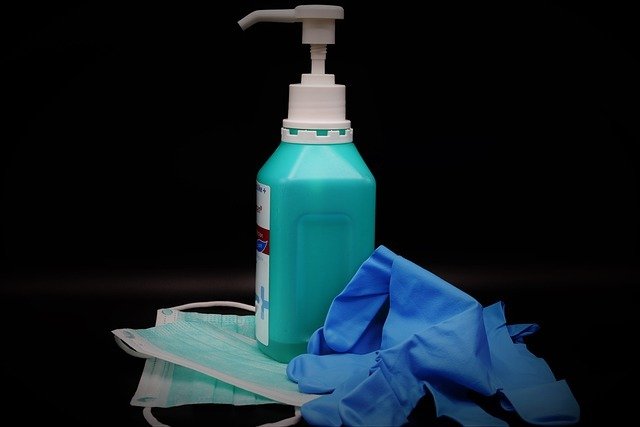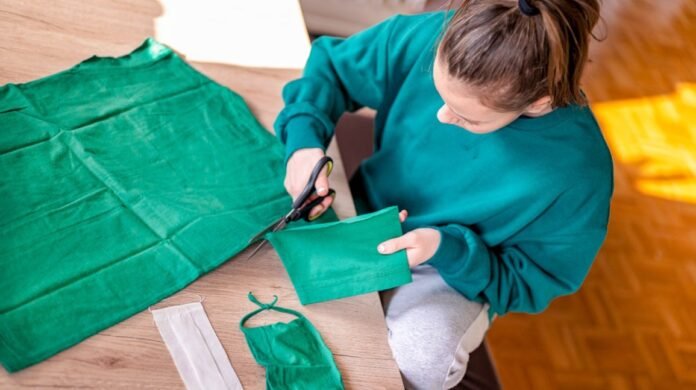Table of Contents
How to Make a Medical Face Mask At Home?
Citizens continue to take precautions for the Coronavirus epidemic that emerged in Wuhan, China, and affected our country. With the prohibition of going out on the street without a mask, citizens who are researching how to make a mask at home are wondering what materials can be used to protect the mask from the virus. Making a last-minute statement, after it was announced that it has become mandatory for everyone to wear masks in all areas where people are collectively gathered.
Citizens tightened the measures due to the coronavirus epidemic that emerged in Wuhan, China and affected the world in a short time. One of the ways to protect against Coronavirus is to use a mask when we are in contact with people. However, the masks have gone out of stock to be found anymore. People who cannot find masks to buy are turning to making masks at home.
The question that “How to make a mask at home?” became the agenda. So, how to make a surgical face mask with home supplies? Following are a few ways discovered by face mask vendor to make mask at home:

How to make masks with paper towels?
Take the piece of paper towel as a sheet. Fold the paper towel over and over. When the folding process is finished, bend it enough to staple the edges. After punching your tire, apply the same process to the other side. You can put on your mask after creating enough opening in the middle to place your face.
How to make a mask with stretch gauze?
You can also make a mask with stretch gauze. Cut the cloth by adjusting the size of your chin and make a small hole with the tip of the scissors from the edges. Put on a wide elastic band behind your ear. You will not be visually uncomfortable and you will not feel an uncomfortable weight.
How to make a mask with fabric cloth?
You can make a mask from a piece of cloth. Supply polyester and Viscose fabric. Cut the fabric adjusting to the size of your chin and make a small hole at the edges with the tip of the scissors. Put on a wide elastic band behind your ear. You can also take guidance from any face mask vendor that you may know.
And How to clean face masks?
In this coronavirus era, face masks have become a part of our lives. Against the coronavirus epidemic, we now wear masks in public areas, markets and even every time we go out. So, how to clean the fabric face mask, how to wash it?
According to the studies, these washing and cleaning methods are only effective in killing viruses and bacteria on masks made of fabrics, such as cotton or polypropylene. If you have surgical masks, the situation is different. However, surgical masks are made of a fabric that is very soft and slightly stronger than a paper napkin. The ingredients in this mask can be badly damaged by some cleaning agents you can use in your home.
Decoction
According to the face mask vendor, one of the ways to clean fabric face masks is to soak in boiling water for 5 minutes. Of course, depending on the material used, the mask may be damaged in a few washes and its effect may be reduced. Because fabric face masks also have a life span. Well, what should be done to find out if your mask has done its job after boiling? To understand this, examine the mask closely, point it to the light, and examine for thinned areas for holes. Because viruses can enter through their damaged surfaces.
Washing machine
It is also a method to wash face masks in bleach on hot water. Just like hand soap breaks the outer part of the virus and breaks it down; Your detergent will also make the mask ready for the next use. But pay special attention to the temperature, because this provides an additional layer of protection.
Water heated to 60 degrees has been shown to effectively break down most viruses. However, both the World Health Organization and the UK National Health Service recommend that this temperature be applied to dirty clothing and fabrics.
Conclusion
Studies on the spread and effects of the new coronavirus continue all over the world. We know today that a significant proportion of COVID-19 patients show no symptoms. Some patients do not show symptoms at first, but then symptoms begin to expose slowly. Therefore, even if people do not show symptoms, they can get sick and infect the disease. Based on this information, the Center of Disease Control of the USA announced that fabric masks can slow the spread of COVID-19, especially in situations where social distance is difficult to maintain.



